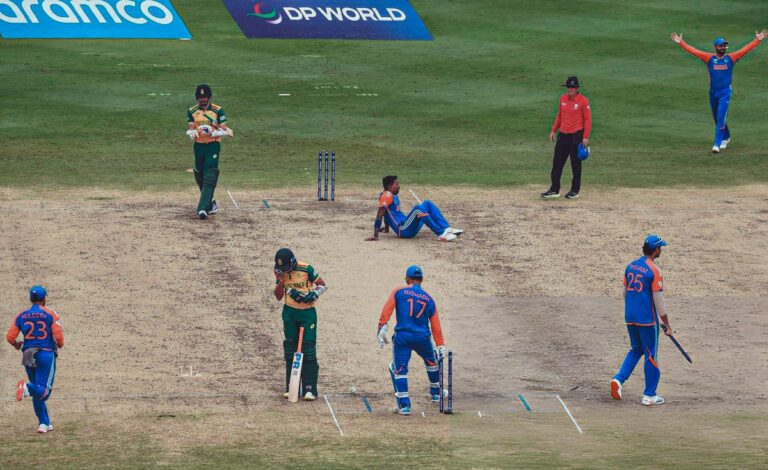Cultural Significance of Cricket in South Asia
99Exch, Gold: Cricket’s roots in South Asia can be traced back to the early 18th century when the British East India Company introduced the sport to the region. Initially played by British colonizers, cricket gradually gained popularity among the local population, eventually becoming a significant part of South Asian culture. The sport quickly captured the interest of the masses, transcending social and cultural barriers to unite people from diverse backgrounds on the cricket field.
As the British Empire expanded its presence in the Indian subcontinent, cricket continued to grow in popularity, becoming a symbol of colonial influence and power. The establishment of cricket clubs and leagues further solidified the sport’s place in South Asian society, with matches attracting large crowds and fervent enthusiasm. Over time, cricket became deeply intertwined with the region’s history, shaping social interactions, fostering national pride, and leaving a lasting impact on the cultural fabric of South Asia.
Origins of Cricket in the Region
Cricket’s roots in South Asia can be traced back to the British colonial era, when the sport was introduced to the region as a form of entertainment for the British expatriates. The British established cricket clubs and leagues, encouraging local elites to adopt the sport as a means of cultural assimilation and social integration.
Over time, cricket spread beyond the confines of the British colonial elite and began to gain popularity among the local population. The sport became a way for individuals to showcase their skills and talents, transcending social barriers and uniting people from different backgrounds in a shared passion for the game. This democratization of cricket laid the foundation for its widespread appeal and eventual transformation into a national obsession across South Asia.
Evolution of Cricket as a Popular Sport
Cricket’s journey as a sport in South Asia has been nothing short of remarkable. From its introduction during the colonial era to its rapid growth in popularity, cricket has become deeply ingrained in the cultural fabric of the region. The sport’s simple yet strategic gameplay, along with its ability to foster strong communities and passionate fan bases, has contributed to its widespread appeal.
Over the years, cricket has transcended social and economic boundaries to become a unifying force in South Asian society. From the streets to the stadiums, cricket matches bring people together, creating a shared sense of pride and camaraderie. The evolution of cricket as a popular sport in the region highlights its ability to bridge gaps, foster friendships, and unite people from diverse backgrounds under the common banner of the game.
Role of Cricket in South Asian Society
Cricket holds a significant place in South Asian society, acting as a common thread that unites people across diverse cultures and backgrounds. In countries like India, Pakistan, Bangladesh, Sri Lanka, and Afghanistan, cricket is not just a sport but a passion that transcends boundaries, bringing together individuals of all ages and social classes on a common platform. The fervent support for cricket teams in these nations goes beyond mere entertainment, reflecting a sense of identity and pride that runs deep within the fabric of society.
Moreover, cricket in South Asia serves as a powerful tool for social cohesion, breaking down barriers and fostering a sense of belonging among communities. It provides a platform for individuals to express their nationalistic fervor and showcase their talent on a global stage. The euphoria surrounding major cricket tournaments in the region reflects the collective emotions of millions of fans who come together to celebrate victories and share the agony of defeats, creating a sense of solidarity that transcends regional differences.
Cricket as a Symbol of National Pride
Cricket stands as a symbol of national pride in South Asia, deeply ingrained in the cultural fabric of the region. Across countries like India, Pakistan, Sri Lanka, Bangladesh, and others, cricket is more than just a sport; it is a unifying force that transcends boundaries and brings people together. The passion and fervor with which fans support their national teams reflect a sense of patriotism and pride that is unparalleled.
In South Asian societies, cricket matches are not merely sporting events but grand spectacles that capture the hearts and minds of millions. The victories and defeats of the national team are felt by the entire nation, evoking emotions that range from elation to despair. From the bustling streets adorned with flags and banners to the loud cheers echoing in stadiums, cricket embodies the spirit of unity and nationalism in a region marked by diversity.
Impact of Cricket on South Asian Identity
Cricket holds a significant place in shaping the identity of South Asian nations. From the streets to international stadiums, the passion for cricket runs deep in the veins of the people. It serves as a common thread that unites individuals across diverse backgrounds, transcending social, cultural, and economic barriers. The sport has the power to evoke a sense of pride and belonging among South Asians, fostering a shared identity that extends beyond borders and boundaries.
The success of South Asian cricket teams on the global stage has further solidified the sport’s impact on identity. Victories and defeats are not just seen as mere outcomes of a game, but as reflections of the resilience, talent, and spirit of the entire region. The iconic players who have emerged from South Asia are celebrated not just for their cricketing prowess, but also as symbols of national pride and unity. Cricket has become embedded in the fabric of South Asian identity, reflecting the emotions, aspirations, and collective consciousness of the people.
Cricket’s Influence on Politics and Diplomacy
Cricket in South Asia wields a significant influence over the political landscape of the region. The sport has been intertwined with politics and diplomacy, often serving as a common ground for fostering international relations and resolving disputes. Matches between rival nations have been known to ease tensions and initiate dialogues at diplomatic levels.
Moreover, cricket has been utilized as a tool for projecting national pride and power on the global stage. Victories in international cricket tournaments have been celebrated as major national achievements, serving to unite communities and bolster patriotism. This emotional connection to the sport has enabled governments to leverage cricket for diplomatic purposes, shaping perceptions and promoting national interests.
Economic Importance of Cricket in South Asia
The economic significance of cricket in South Asia cannot be overstated. The sport has become a massive industry, generating substantial revenue through broadcasting rights, sponsorships, merchandise sales, and ticket sales. Major cricket tournaments such as the Indian Premier League (IPL) and the Pakistan Super League (PSL) have become lucrative platforms for players, teams, and organizers, bringing in substantial profits and creating numerous job opportunities within the cricketing ecosystem.
Moreover, cricket has also boosted tourism in the region, with international matches attracting fans from around the world to South Asian countries. The influx of tourists attending cricket matches and exploring the local culture has had a positive impact on the hospitality and service industries, contributing to the overall economic growth of the countries hosting these events. Additionally, investments in cricket infrastructure, such as stadiums and training facilities, have further stimulated economic development and created employment opportunities in construction and maintenance sectors.
Gender Dynamics in South Asian Cricket Culture
In South Asian cricket culture, gender dynamics have long been predominant, with the sport traditionally being perceived as a male-dominated domain. Men have historically held the spotlight as players, coaches, and administrators, while women have often been relegated to supporting roles or overlooked entirely. Despite this historical bias, there has been a gradual shift towards inclusivity and recognition of women’s involvement in cricket in recent years.
With the rise of women’s cricket leagues, teams, and initiatives across South Asia, the landscape of the sport is beginning to change. Female players are gaining visibility and breaking stereotypes, challenging the notion that cricket is exclusively a male pursuit. These developments are not only empowering women to participate actively in the sport but also reshaping societal perceptions of gender roles in the cricketing arena. As more opportunities open up for women in cricket, the traditional gender dynamics within South Asian cricket culture are experiencing a gradual transformation.
Future of Cricket in South Asia
Cricket in South Asia continues to thrive with unwavering passion and fervor among players and fans alike. The future of the sport in this region looks promising, as cricket remains deeply ingrained in the cultural fabric of countries such as India, Pakistan, Sri Lanka, Bangladesh, and Afghanistan. With the rise of talented young players and the growing popularity of domestic leagues, South Asia is poised to remain a powerhouse in the international cricketing arena.
Moreover, the increasing investment in infrastructure, coaching, and development programs indicates a strong commitment to nurturing the next generation of cricketers. The technological advancements in the game, such as the introduction of innovations like the Decision Review System (DRS) and real-time analytics, are further enhancing the overall cricketing experience for players and spectators. As the sport continues to evolve and adapt to the modern era, it is evident that cricket in South Asia will only continue to grow in influence and stature on the global stage.
What is the history of cricket in South Asia?
Cricket has a long history in South Asia, with the sport being introduced during British colonial rule in the region.
How did cricket evolve as a popular sport in South Asia?
Over the years, cricket has gained immense popularity in South Asia, with the region producing some of the world’s best cricketers and hosting major international tournaments.
What role does cricket play in South Asian society?
Cricket is deeply ingrained in the social fabric of South Asian countries, serving as a source of entertainment, national pride, and a means of bringing communities together.
How has cricket influenced the identity of South Asian nations?
Cricket is often seen as a symbol of national pride in South Asia, with the sport playing a significant role in shaping the cultural identity of the region.
What impact has cricket had on politics and diplomacy in South Asia?
Cricket has been used as a tool for diplomacy and peace-building in South Asia, with matches between rival nations often serving as opportunities for diplomatic engagement.
Why is cricket economically important in South Asia?
Cricket is a major source of economic activity in South Asia, contributing to the region’s tourism industry, media sector, and merchandise sales.
How do gender dynamics play out in South Asian cricket culture?
While cricket has traditionally been a male-dominated sport in South Asia, efforts are being made to promote women’s cricket and provide more opportunities for female players.
What does the future hold for cricket in South Asia?
The future of cricket in South Asia looks promising, with the sport continuing to thrive and evolve, and new generations of players emerging to carry on the legacy of the game in the region.







